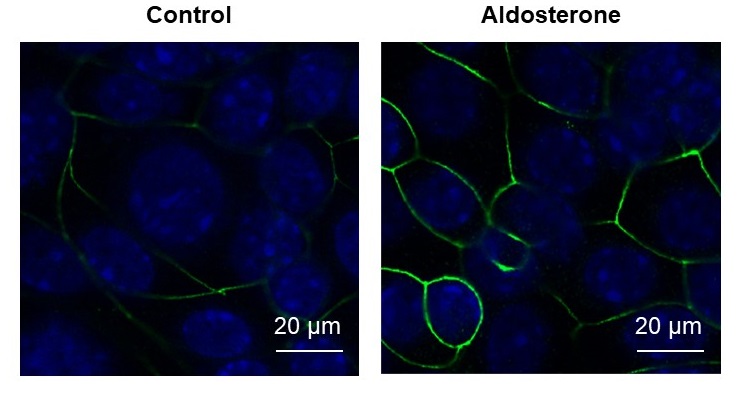The role of aldosterone on tight junctions
One of the main functions of aldosterone is to maintain normal levels of sodium in the body. This regulation requires reabsorption of sodium in the collecting duct, one of the last sections of kidney tubules. Sodium reabsorption is the result of transcellular transport through cell membranes and paracellular transport, between cells. While the role of aldosterone in the regulation of transcellular transport is well-known, its impact on paracellular transport remained to be proven.
Under the control of aldosterone?
As a first step in understanding this process, researchers from the laboratory of Prof. Eric Feraille were able to demonstrate coordination between transcellular transport via ENaC channels and paracellular transport via tight junctions. However, the role played by aldosterone in paracellular transport was still not clear.
In their recent study in the American Journal of physiology - renal physiology, scientists from the laboratory of Prof. Eric Feraillehave finally been able to confirm that tight junctions are under the control of aldosterone. When cells are treated with aldosterone, tight junctions are tightened up to avoid any passage of sodium between cells, as shown in the Figure below.

When cells are treated with aldosterone, tight junctions (in green) are tightened up to avoid any passage of sodium between cells (right panel) in comparison to control cells without aldosterone (left panel). © UNIGE
What’s next?
As sodium intake is mainly in the form of salt, a combination of sodium and chloride, the research team is now investigating if aldosterone and tight junctions are also involved in the regulation of transcellular chloride transport.
18 Oct 2021
